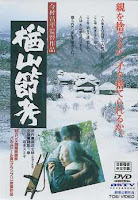Planet-Warming Gases Make Some Food Less Nutritious, Study Says
VOA News
May 23, 2018 3:00 PM Steve Baragona (source)
Planet-Warming Gases Make Some Food Less Nutritious, Study Says
研究顯示:溫室氣體減少某些食物的營養含量
May 23, 2018 3:00 PM
Steve Baragona
Rising levels of planet-warming gases may reduce key nutrient levels in food crops, according to a new study.
Rice grown while exposed to carbon dioxide levels expected by the end of this century had lower levels of vitamins, minerals and protein than normal, the results showed.
The authors said the impact would be most significant for the poorest citizens of some of the least-developed countries, who eat the most rice and have the least diverse diets.
In the study, published in the journal Science Advances, scientists grew 18 varieties of rice in fields in China and Japan. They pumped carbon dioxide over the plants to simulate the atmosphere of the future.
Rice grown under high carbon dioxide conditions had, on average, from 13 to 30 percent lower levels of four B vitamins, 10 percent less protein, 8 percent less iron and 5 percent less zinc than conventionally grown rice.
On the other hand, vitamin E levels increased by about 13 percent on average.
The results are bad news, "especially for the nutrition of the poorer population in less-developed countries, because this population depends for nutrition on rice," said study co-author Kazuhiko Kobayashi at the University of Tokyo.
That includes roughly 600 million people in Indonesia, Cambodia, Myanmar, Bangladesh, Laos and several other nations, mainly in Southeast Asia, the report said.
While research has shown higher temperatures from climate change and weather extremes will cut food production, especially in the tropics, scientists are increasingly finding that rising greenhouse gas levels are a threat to food quality as well.
Earlier studies by Harvard University researcher Sam Myers and colleagues showed that wheat, maize, rice,field peas and soybeans grown under high carbon dioxide conditions all had lower levels of protein and minerals. The scientists estimated that roughly 150 million people might be at risk of protein or zinc deficiency by 2050.
It's one example of the surprises climate change has in store, Myers said.
"If you and I sat down 15 years ago and thought about, 'I wonder how dumping enormous amounts of carbon dioxide into the atmosphere will affect our well-being,' I think one of last things we would have come up with is, 'I bet it will make our food less nutritious,' " he said.
"My concern is, there are many more surprises to come," Myers added.
He noted that global pollution, biodiversity loss, deforestation and land use change, and other human activities are likely to produce unexpected problems as well.
"You can't fundamentally disrupt all the natural systems that we have adapted to over millions of years of evolution without having these ripple effects that come back to affect our own health and well-being," he said.
The new study suggests a way to minimize the nutritional impact of climate change.
"Different [rice] varieties showed quite different changes in response to higher carbon dioxide concentrations," Kobayashi said. Rice breeders can use these differences to create varieties that are less affected by greenhouse gas levels, he said.
一項新研究發現,導致地球暖化的氣體濃度越來越高時,農作物(food crops)中關鍵營養物質(nutrient)的含量可能因此減少。
科學家預估了本世紀末大氣可能的二氧化碳濃度,並讓稻米在類似的環境下生長。研究結果顯示,稻米的維他命(vitamin)、礦物質(mineral)和蛋白質(protein)的含量少於目前一般的正常值。
研究團隊表示,這樣的變化可能嚴重衝擊某些低度開發國家(least-developed countries)中最貧困的居民,因為他們吃最多稻米,且飲食沒有多樣性。
這份研究發表於《科學先端》(Science Advances)期刊。科學家在中國及日本的田地種植 18 種(variety)稻米,並在周圍注入(pump)二氧化碳,以模擬(simulate)未來的大氣狀況。
在高二氧化碳濃度下生長的稻米和一般種植的稻米相比,平均來說,維他命 B 群的含量少了 13% 到 30%,蛋白質少了 10%,鐵(iron)減少 8%,鋅(zinc)減少 5%。
但另一方面,維他命 E 的含量平均增加了 13%。
這份研究結果帶來了壞消息,「尤其對低度開發國家中貧窮人口的營養攝取來說,因為這群人主要依賴稻米獲取營養。」研究報告的共同作者小林和彦(Kazuhiko Kobayashi)表示。小林和彦目前任教於日本東京大學(University of Tokyo)。
研究報告指出,受影響的人口粗估多達 6 億,居住在印尼(Indonesia)、柬埔寨(Cambodia)、緬甸(Myanmar)、孟加拉(Bangladesh)、寮國(Laos)及其他幾個國家,主要都是東南亞(Southeast Asia)國家。
許多研究已顯示,氣候變遷及極端氣候帶來的較高氣溫會造成食物減產,以熱帶地區(the tropics)格外受影響。此外,科學家也漸漸發現,溫室氣體(greenhouse gas)的濃度增加,也會影響食物品質。
哈佛大學(Harvard University)研究員山姆.邁爾斯(Sam Myers)和同事之前曾進行了一項研究,發現生長在高二氧化碳濃度下的小麥(wheat)、玉米(maize)、稻米、碗豆(field pea)及黃豆,蛋白質和礦物質的含量都比較少。他們預估 2050 年時,大約有 1.5 億人可能會面臨蛋白質或鋅缺乏。
邁爾斯表示,氣候變遷帶來很多始料未及的影響,這個變化就其中即將發生(in store)的一個 。
他說:「如果我們 15 年前就坐下來思考:『假如大氣中灌入大量的二氧化碳,會對我們的生活產生什麼影響?』我認為,最不會想到的答案就是『我敢肯定,這樣會使得食物沒那麼營養(nutritious) 。』」
邁爾斯繼續表示:「我擔心更多意料之外的影響將會接踵而來。」
他也提到,全球性的汙染、生物多樣性(biodiversity)的減少、森林砍伐(deforestation)、土地利用的改變,以及其他人類活動都很可能產生許多意想不到的問題。
「我們經過幾百萬年的演化才適應(adapt to)現有的自然體系,不可能徹底擾亂了自然體系後,卻沒有這些漣漪效應(ripple effects)來影響我們的健康和福祉(well-being)。」他說道。
這份新研究建議了如何降低氣候變遷對食物營養含量的衝擊。
小林和彦表示:「在二氧化碳濃度(concentration)較高的環境下生長,不同的(稻米)品種呈現不同變化」,因此稻米育種員(breeder)能運用這樣的差異,培育出較不受溫室氣體濃度影響的品種。
Language Notes
nutrient [`njutrɪənt] (n) 養分;營養物
* nutritious [nju`trɪʃəs] (a) 營養豐富的,營養價值高的
variety [və`raɪətɪ] (n) 不同品種;變化
* variety 為「變化、多樣化」之意時不可數,但為「不同種類」之意時可數
pump [pʌmp] (v) 抽吸、抽送
simulate [`sɪmjə͵let] (v) 模仿、類比;假裝
the tropics (n phr) 熱帶地區
* 注意本名詞片語為複數,搭配複數型動詞
* tropic [`trɑpɪk] (n) 回歸線/(a) 熱帶的;熱帶地方的
in store (prep phr) 即將發生
deforestation [͵difɔrəs`teʃən] (n) 人為毀林;大面積砍伐森林
* deforest [di`fɔrɪst] (v) 採伐 . . . . . . 的森林;清除 . . . . . . 上的樹林
adapt [ə`dæpt] (v) 使適應;適應;改編
* 及物動詞的用法:adapt oneself to something;不及物動詞的用法:adapt to something
concentration [͵kɑnsɛn`treʃən] (n) 濃度;專注;集中
* concentrate [`kɑnsɛn͵tret] (v) 使濃縮;專注,專心;集中
breeder [`bridɚ] (n) 培育植物的人;飼養動物的人
* breed [`brid] (v)(為育種目的)飼養,使繁殖
Check your vocabulary!
Fill in the blanks with a word or phrase from the list above. Make necessary changes. After you finish, highlight the blanks to reveal the hidden answers.
1. We have a big surprise in store for you.
2. In cheap furniture, plastic is often used to simulate wood.
3. Our supermarket stocks apples in several different varieties.
4. High concentrations of toxic elements were found in the polluted areas.
5. A healthy diet should provide all your essential nutrients.
編譯:汪冠岐
|

 Read more on VOA.
Read more on VOA.








